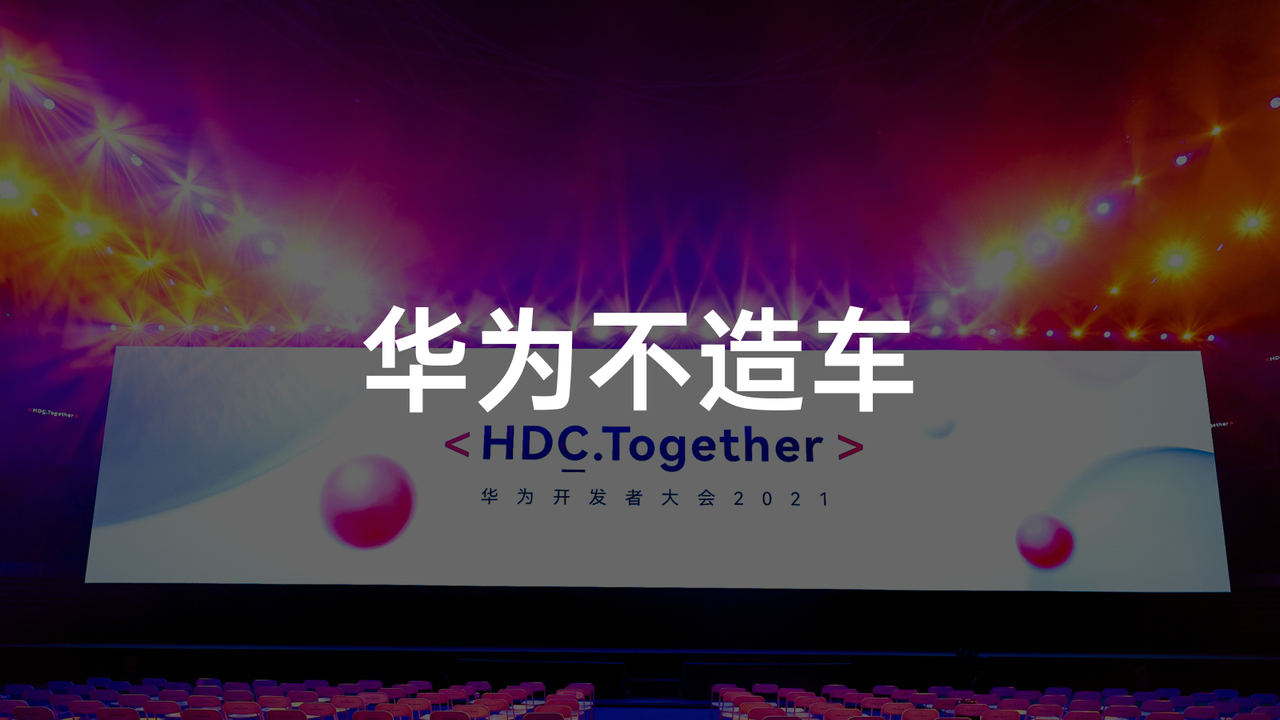On October 18th, a few days before I left for HDC 2021, Huawei signed the world’s largest energy storage project to date, the 1,300 MWh Shuaibah III project in Saudi Arabia.

Apart from the tribute paid to Huawei’s concept stocks in the stock market the next day, I was a little confused: Huawei? Energy storage?
I immediately looked up the related news and found out that Huawei Digital Energy had been researching storage systems for more than 10 years, with more than 8 GWh of applied energy storage experience, but Huawei had been relatively low-key before this. As for the photovoltaic inverter, which is crucial for this energy storage project, Huawei had established a relevant team in 2010 and became the leading company with a 23% market share in the “2020 global photovoltaic inverter supplier market ranking” released by Wood Mackenzie.
With a slowly converging surprise, I attended a tech company’s press conference in my capacity as a car media representative, over the course of the Huawei Developer Conference, which lasted from October 22 to 24 and I participated in the first two days of the event. As I delved deeper into Huawei, I gradually saw through the “facade” of this towering tree.
Progress of HarmonyOS
Because it was my first exhibition, and the HDC conference itself was not aimed at consumer-end customers, I have compiled a brief history of HarmonyOS and its features and current progress.
HarmonyOS Timeline
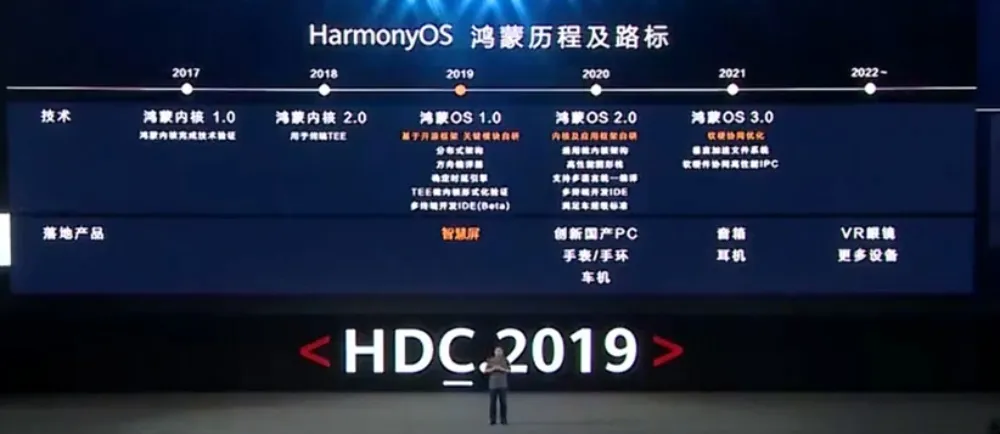
At the Huawei Developer Conference in 2019, we saw Huawei’s roadmap for HarmonyOS for the first time. I have also compiled the entire timeline for HarmonyOS based on the actual situation:
-
Started planning its own operating system “HarmonyOS” in 2012;
-
In 2019, it was officially unveiled at the Huawei Developer Conference as HarmonyOS 1.0, and was the first to be adapted to Huawei’s smart screen products. Yu Chengdong stated that HarmonyOS OS will be open source;
-
In September 2020, the beta version of HarmonyOS 2.0 for large screens, mobile phones, and car terminals was released simultaneously;
-
On December 16, 2020, the HarmonyOS 2.0 Beta test for mobile phones was officially released;
-
On June 2, 2021, the official version of HarmonyOS 2.0 was launched for push.- On October 22, 2021, Huawei released HarmonyOS 3 Developer Preview, HMS Core 6, etc.
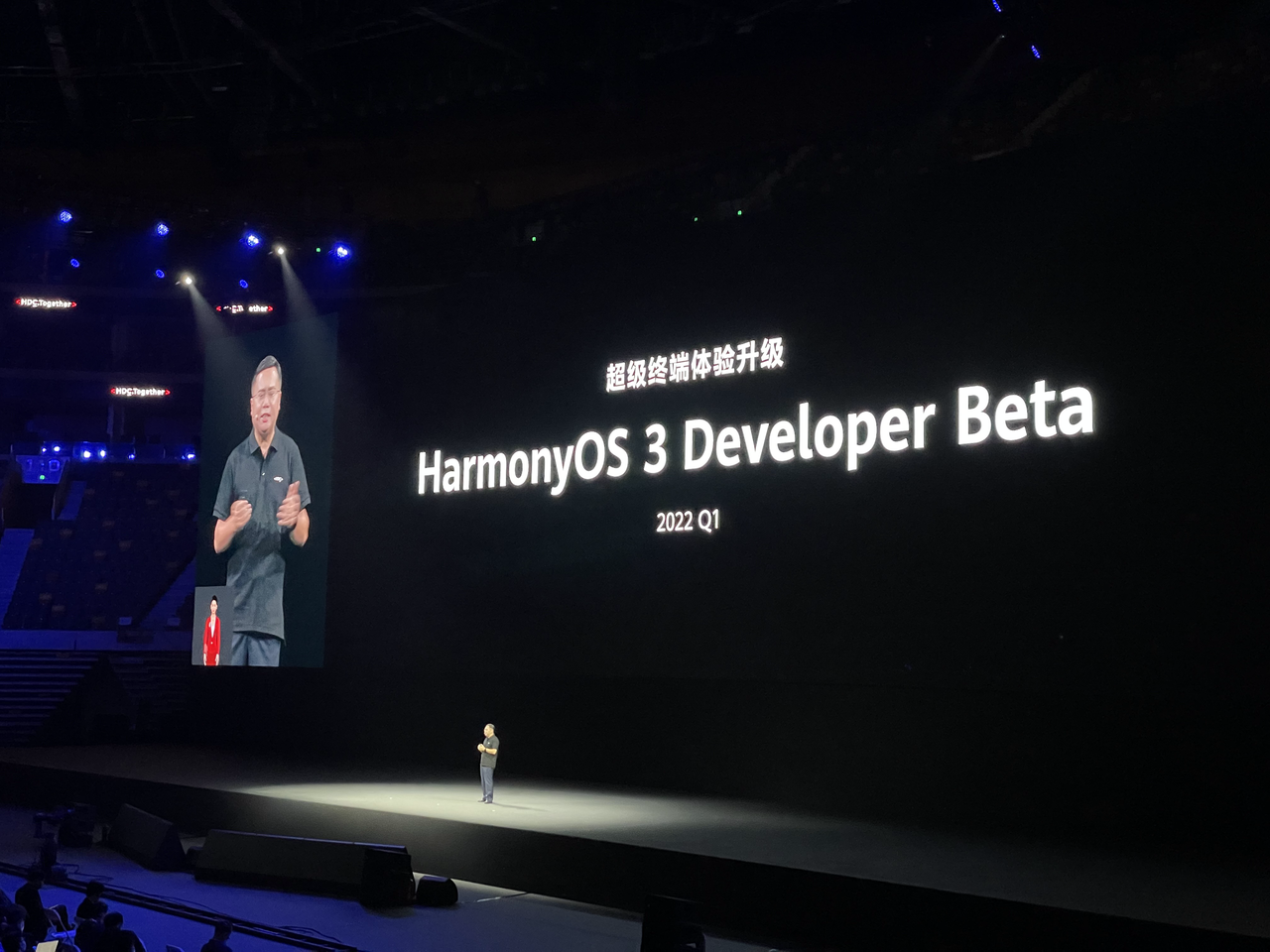
- Huawei announced that HarmonyOS 3 Developer Beta is expected to be released in the first quarter of 2022.
Features of Huawei HarmonyOS
The goal of HarmonyOS is not to replace Android, but to realize ubiquitous connectivity. HarmonyOS has advantages in microkernel, distributed architecture, and ecological sharing:
-
The basic function of a microkernel is to simplify kernel functions, providing only the most basic services such as thread scheduling and process communication. This makes the microkernel highly flexible and can be deployed on various device terminals, connected to each other through inter-process communication (IPC). It also demonstrates good performance in terms of security and latency;
-
Distributed architecture can achieve rapid connection between different terminal devices, share hardware capabilities, and perform cross-device data synchronization management and task scheduling;
-
Ecological sharing provides convenience for developers. By developing one version of the app, HarmonyOS can achieve multi-end deployment and achieve cross-terminal ecological sharing.
Current Progress
In this section, I removed the more obscure software development progress and directly showed the current progress of the entire project through data.
-
As of now, HarmonyOS has been activated on more than 150 million terminals, including smartphones, tablets, watches, smart screens, etc.;
-
Currently, there are more than 1,800 partners and 4,000 products in Huawei HiLink. The shipment volume of new ecological devices in 2021 exceeds 60 million units;
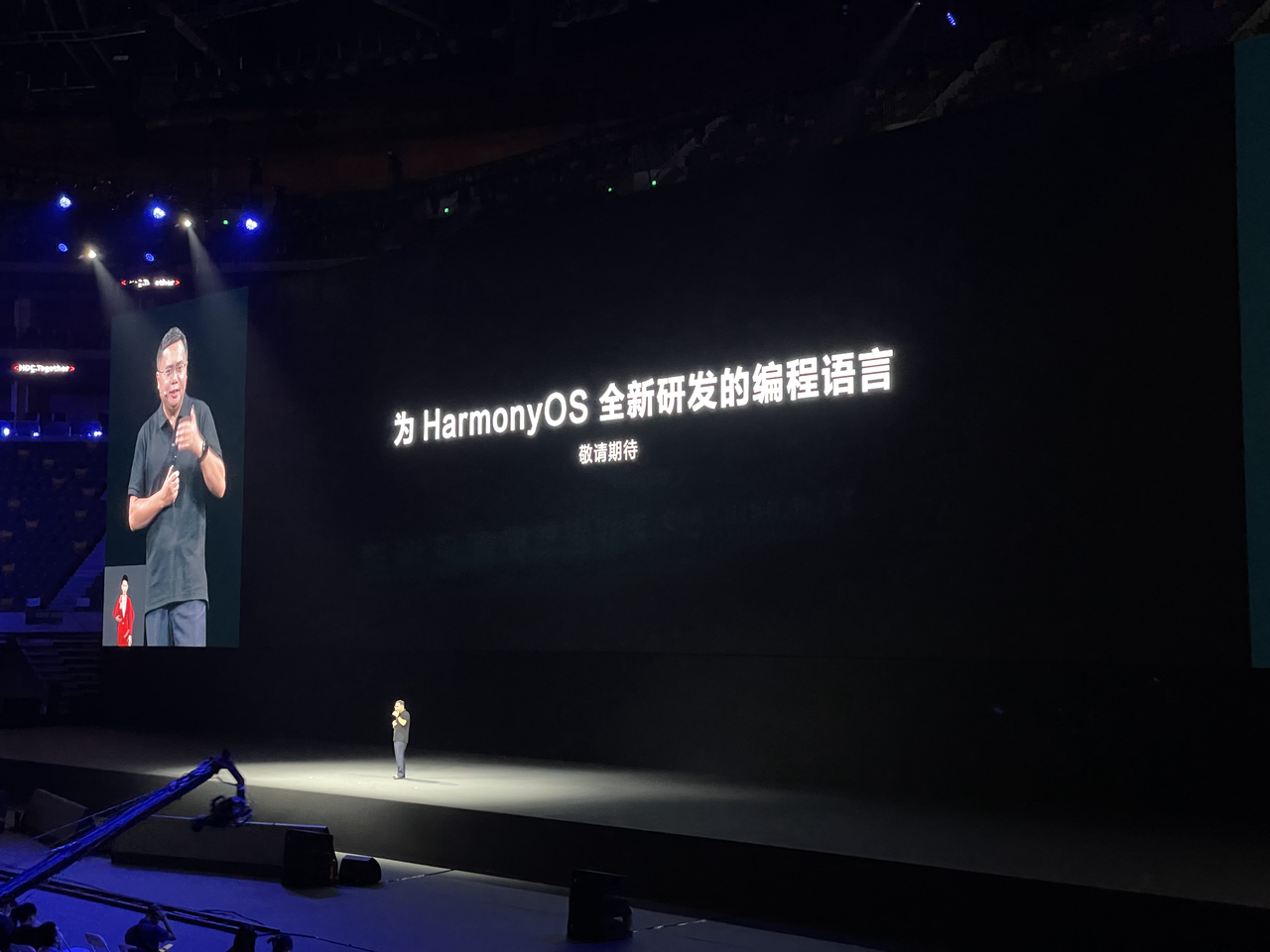
- Huawei announced that it will release a new programming language developed for HarmonyOS, which will be launched as early as next year;
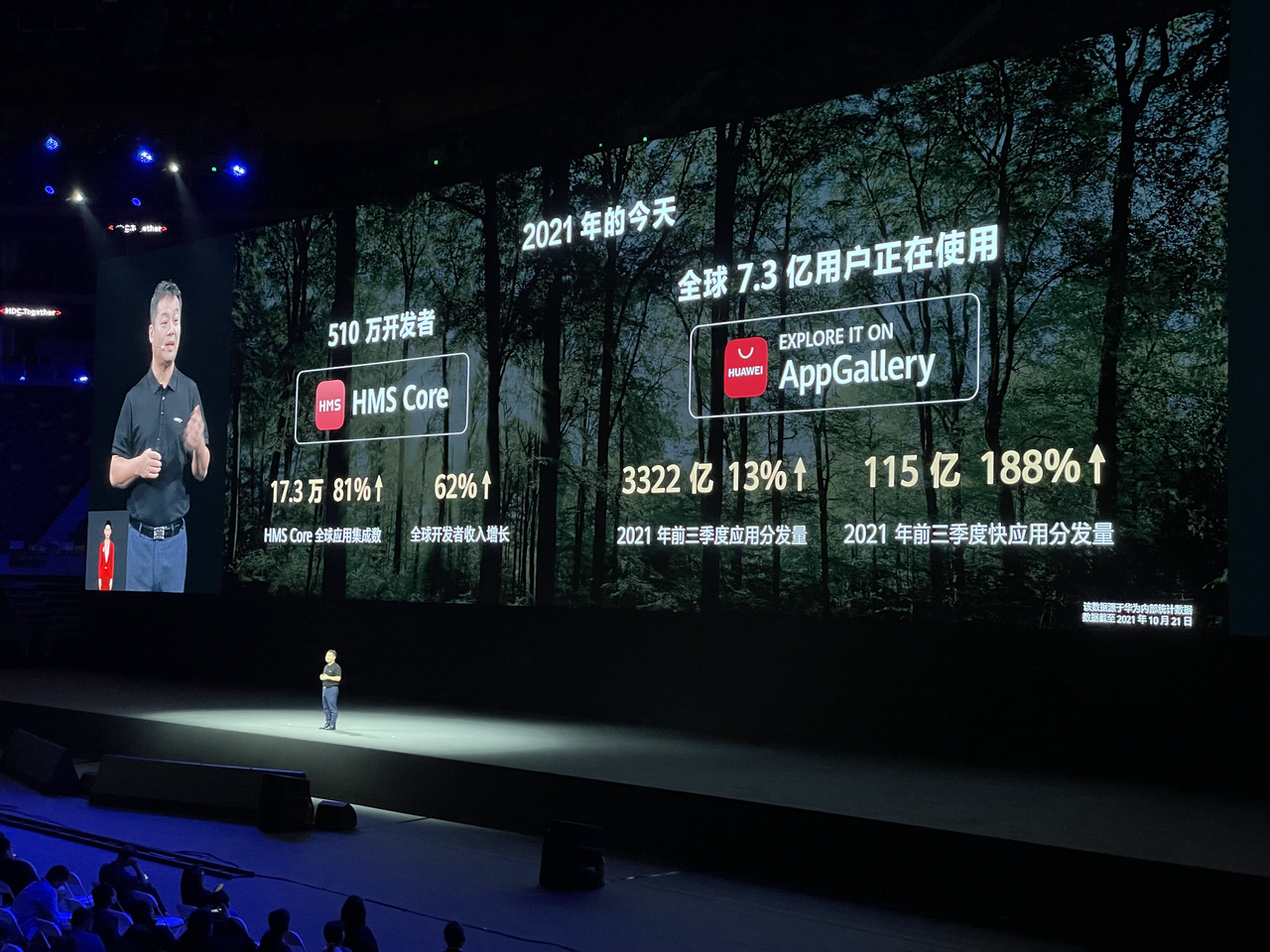 – Supported by 5.1 million developers worldwide, Huawei Mobile Services (HMS) ecosystem continues to grow rapidly: over 173,000 apps have integrated HMS Core, and Huawei AppGallery has distributed 332.2 billion apps globally in the first three quarters of 2021, with a 62% increase in revenue shared with developers.
– Supported by 5.1 million developers worldwide, Huawei Mobile Services (HMS) ecosystem continues to grow rapidly: over 173,000 apps have integrated HMS Core, and Huawei AppGallery has distributed 332.2 billion apps globally in the first three quarters of 2021, with a 62% increase in revenue shared with developers.
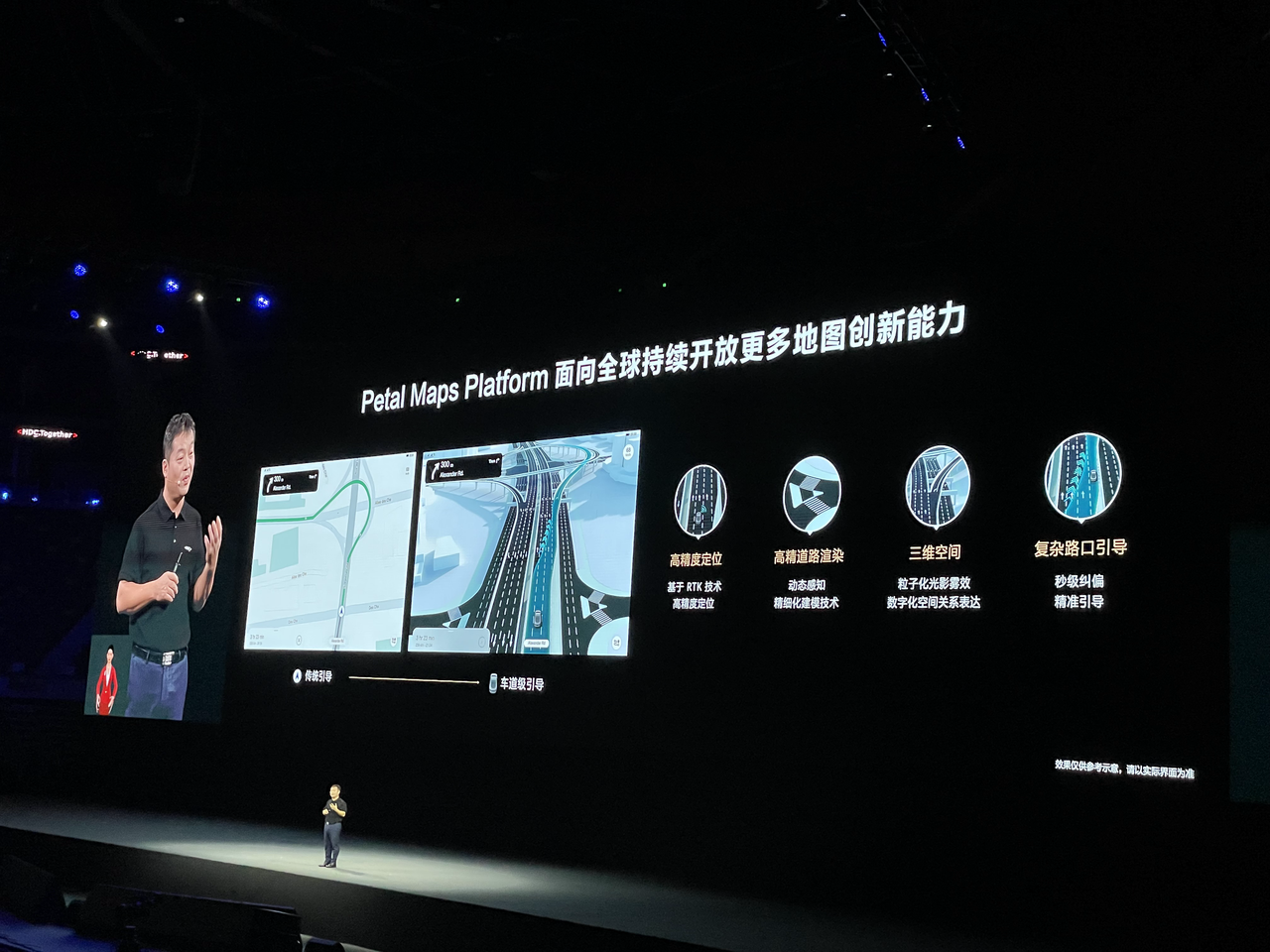
- Huawei has launched Petal Maps in 22 countries.
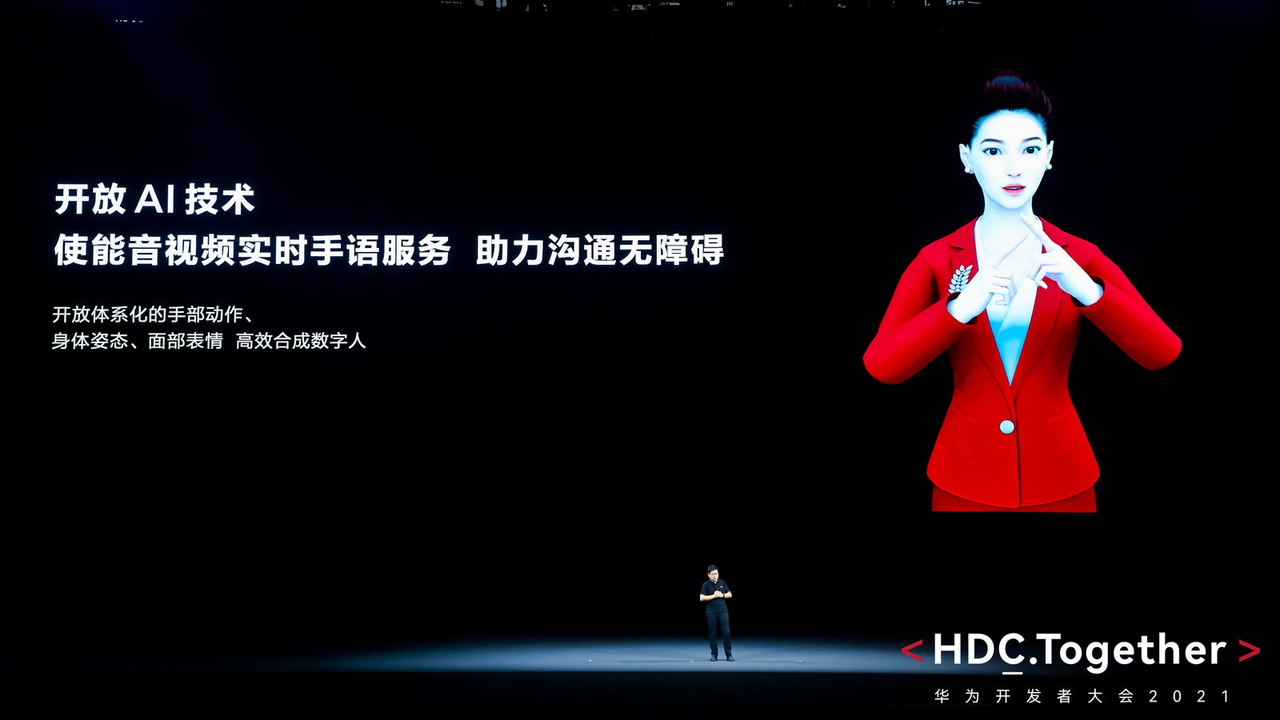
- At the conference, there was also a surprise: a virtual sign language interpreter in real-time broadcast in the lower right corner.
Many people believed the interpreter’s signing was very fast. With great curiosity, I approached the staff on the second day, and discovered that the normal sign language translation usually takes some time after the end of the speech to complete, but this time the virtual interpreter has achieved real-time translation by accelerating the movements. Even the term “HarmonyOS,” which is not in the Chinese sign language database, was re-recorded specifically for this event.
About Cars
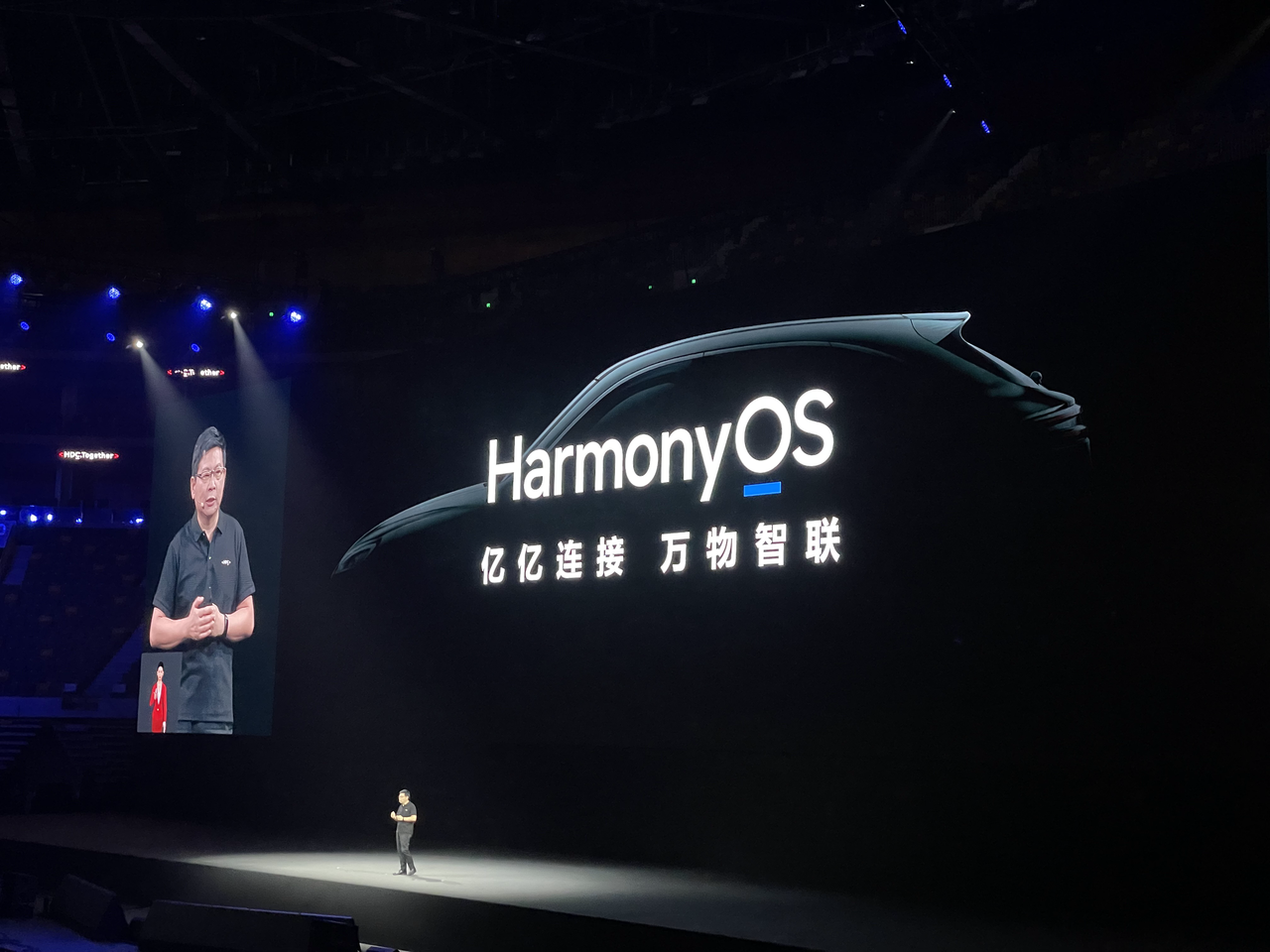
After watching the entire HDC conference, it’s noticeable that “Jihoo,” which will be launched at the end of this year, was never mentioned by the executives. This made the Jihoo Alpha S HI edition seem somewhat strange. Conversely, Cyrus was mentioned repeatedly in the poster and speeches, and it was even announced that the next model to be launched in collaboration with Cyrus will be equipped with HarmonyOS intelligent cockpit.
The latest HarmonyOS intelligent cockpit car machine picture is exposed
At the Huawei Developer Conference, Gong Ti, President of Huawei’s consumer business software department, announced that Huawei’s smart cockpit will be unveiled soon, and it will be an upgraded experience compared to traditional car machines. The advantages of Huawei’s intelligent cockpit are its excellent interconnectivity and ecosystem.
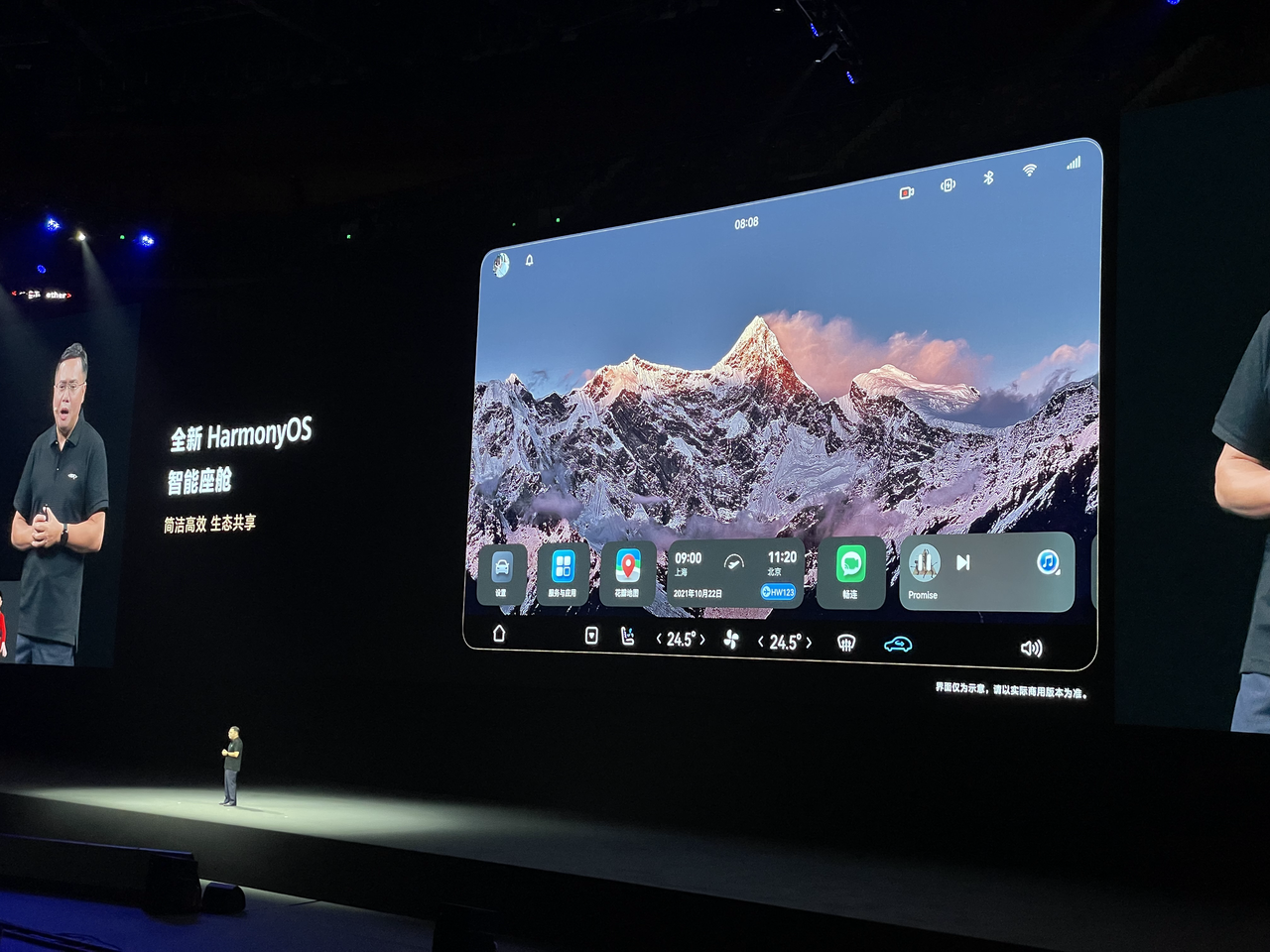
At the conference, Huawei showcased an image of the car machine that had not been released previously. We can see a horizontally oriented round-cornered rectangular screen with a tablet-like design.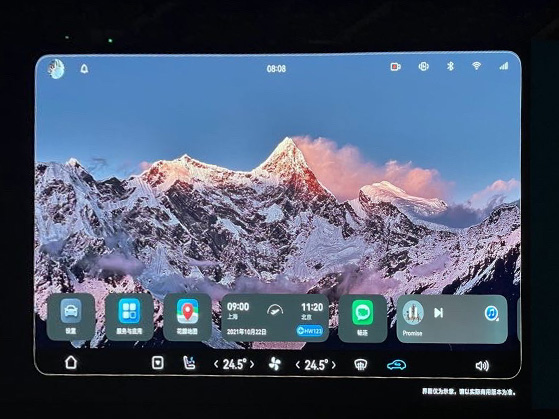
- At the bottom of the Dock bar, there are always the Home page, Seat Ventilation, Air Temperature/Wind Strength setting for the left and right partition, and volume buttons. This design and layout have been used earlier in Tesla’s in-car system design, and other manufacturers such as Huawei also use similar layouts more or less for their Dock bar design, which shows that this design has become the consensus among everyone.
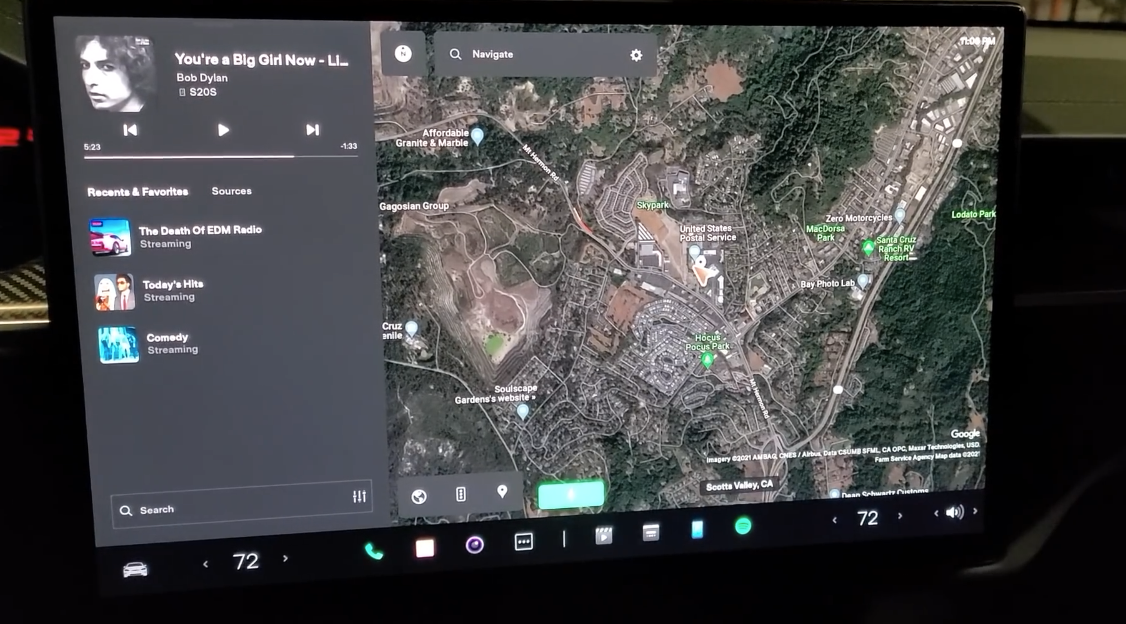
-
At the bottom of the in-car system desktop, there are car settings, app drawer, Petal Maps atomic service widget (the picture shows plane flight information, which should be connected to the phone account), multimedia components, and other functions.
-
At the top are account, reminders, time, driving recorder, wireless charging pad status, Bluetooth, wireless, and signal status displays.
-
Instead of showing maps like other in-car systems in the middle of the screen, it displays wallpaper, which may be reserved by the manufacturer for customization.
From the UI design, main screen wallpaper display, atomic components, and other elements, we can see that Huawei has incorporated many logical operations and usage habits from tablets and mobile phones into the intelligent cockpit in-vehicle system, but the difference from the previous demo version is not significant.
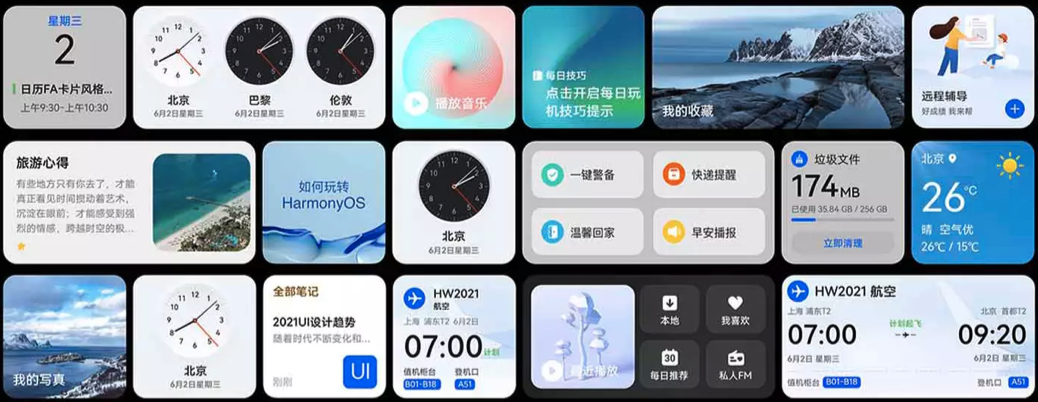
In fact, both iOS and Android users should be very familiar with this atomic component on their mobile phones. Yes, these are the “Little Cards” that can be freely resized, placed anywhere on the desktop, even skinned, and customized to display information.
I personally appreciate this atomic component function very much. Because on mobile phones, the atomic components of various domestic manufacturers have given users great customization rights. This point will still be sought after by consumers on the in-car system as well. We can use exclusive atomic components to “decorate and build” our own exclusive in-car system design. This is also a big advantage of Huawei compared to Tesla.The trend of car infotainment systems moving towards flat design is logical, but it requires optimization for quick and accurate touch operations and all-scenario voice control during driving. My colleague, Reinhardt, experienced Huawei’s intelligent cockpit in July demo car, which was covered in “Huawei says Hi to you! HongMeng cockpit full network test” (https://mp.weixin.qq.com/s/Df6x4OUPa9LHm9DFBC8ObA). You can check out the related functions in the video, and I won’t repeat them here.
Of course, once automakers confirm the use of HongMeng infotainment system, they will surely carry out various “theme changes” operations on this system. Therefore, the version we see can be understood as a public version graphics card of NVIDIA.
About the new car
Yu Chengdong announced that the HongMeng OS intelligent cockpit will appear first on the JinKang Sylphy midsize SUV, possibly by the end of this year or early next year!
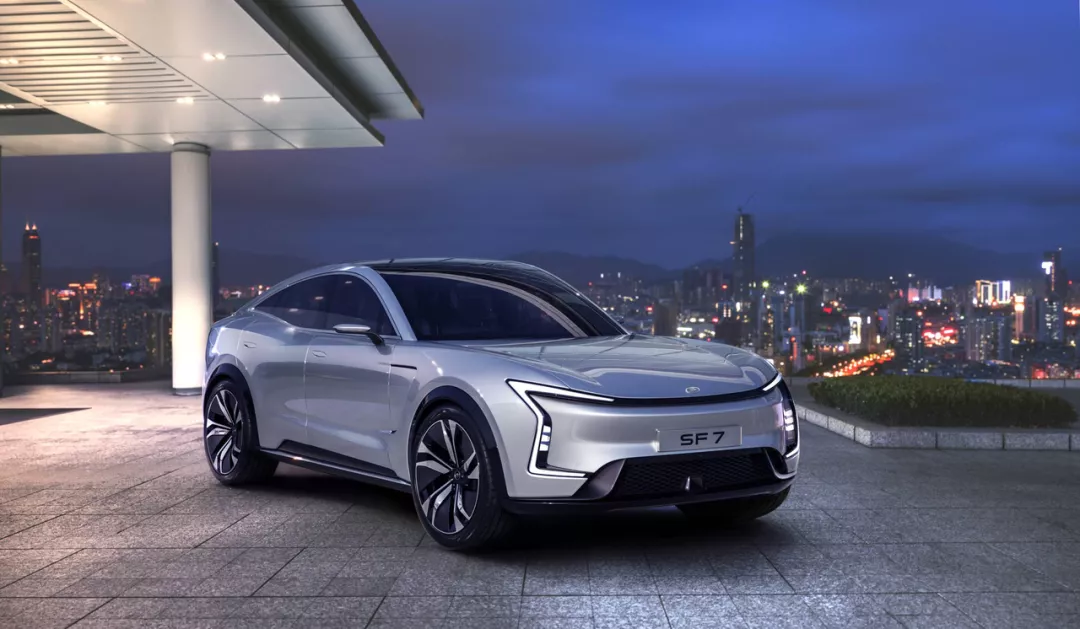
There have been plans to add the SF series to the lineup of Sylphy vehicles for quite some time now, and the mid-size SUV is the SF7. However, there is no further news about the release of this vehicle yet.
On October 15, it was reported that Huawei and Sylphy were collaborating on the second vehicle using Huawei’s intelligent selection after the SF5, called the AoTu. It is said that this car will use the full set of Huawei’s intelligent vehicle solutions, and JinKang Sylphy will more likely play the role of “OEM,” which means that Huawei is likely to obtain the product definition rights of the entire vehicle in the pre-research stage. Therefore, Huawei’s weight in the vehicle will be higher than that of the Jixu Alpha S Hi edition. Of course, this news needs further confirmation.
AR-HUD
What is AR-HUD? To understand this, we need to understand the development path of HUD:
-
C-HUD (Combiner HUD). This is an earlier model of HUD. When the car is started, we can see a transparent glass standing in front of the driver’s seat on the dashboard. Optical images are directly projected onto the glass as a means of display through refraction. The design cost and difficulty are relatively low;
-
W-HUD (Windshield HUD). This is the more common HUD we see now. Images are projected directly onto the windshield. However, the windshield’s curvature and angle require high-precision non-spherical reflective mirrors for better real-world effects, which increases cost.- AR-HUD (Augmented Reality HUD). This is the protagonist of today’s discussion. Literally speaking, it forms an “augmented reality” effect by interacting with real-world objects. The Volkswagen ID.4 model already has it installed.
-
3D-AR HUD. This can be understood as the “enhanced full version” of AR-HUD, which mainly requires full self-driving to cooperate and can achieve more realistic interaction.
Huawei’s AR-HUD provides a large viewing angle of 13°x 5°, which can present a 70-inch display area at a distance of 7.5 meters in front of the car, with a volume of only 10 L.
In the lab where photography and video recording were prohibited, I quickly input relevant knowledge using my phone. Under the guidance of Huawei’s optical product line’s car-mounted optical PR, I obtained the images used during the presentation that day.
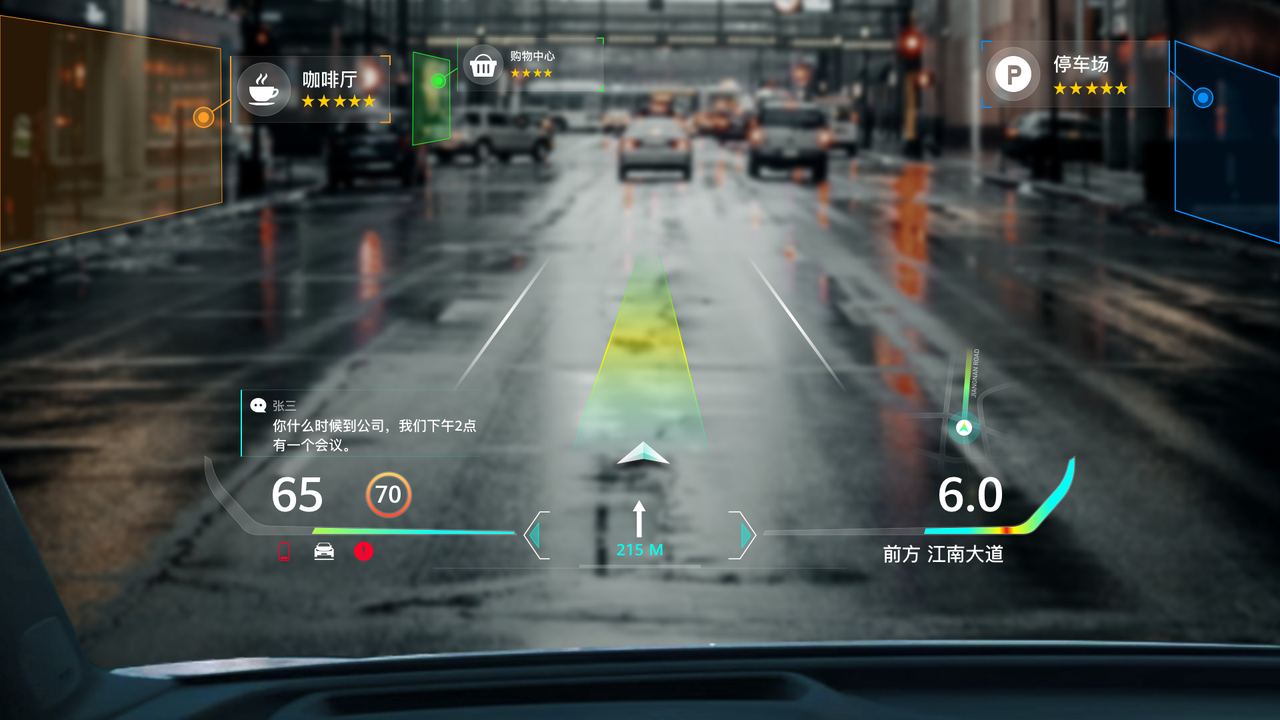
As the HUD area expands, many people’s imaginations begin to falter in the face of technical difficulties. Let’s take a look at Huawei’s content planning.
The center position of the HUD body is still based on the normal road surface. Navigation guidance and lane line projection appear as obvious auxiliary enhancements. Interestingly, in the image below, we can see that in heavy rain, the AR-HUD directly marks the road vehicles with obvious and hard-to-ignore icons to warn drivers.
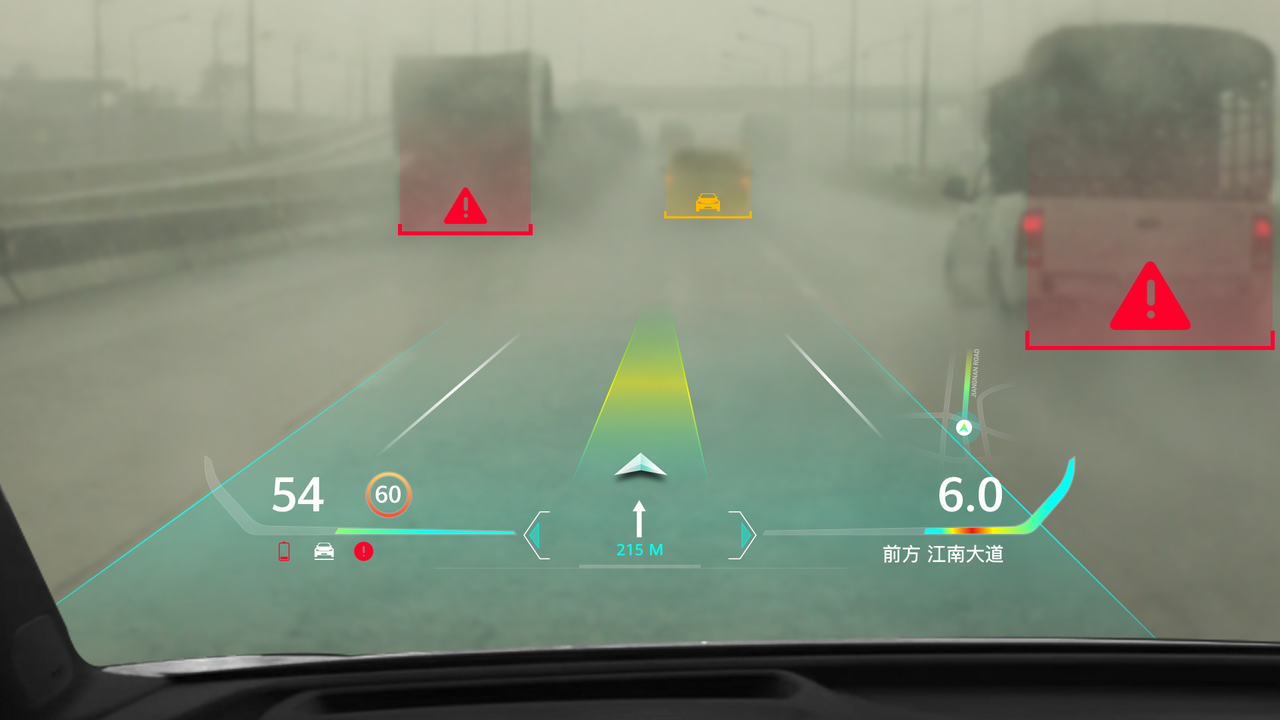
Essentially, this system is an AR-HUD special tuning edition visual display based on assisted driving perception hardware. However, the difficulty lies in the precise marking of the actual vehicle in the driver’s perspective. Only such promotional posters were available on site; the actual experience is unknown.
The bottom area has the maximum information density, displaying driving information (battery level, speed, speed limit), navigation information (progress, small map), message display, etc.
This display can already be achieved on car models with C-HUD and W-HUD.
At the top display area, we can see the labeled information of shops such as cafes, parking lots and shopping centers.Initially, I thought this was a complex project as it requires precise matching of map information and real-time location, so the experience may be poor. However, the staff explained that the position of this “box” is relatively accurate and lag issues are unlikely to occur. Furthermore, this function has already been made available to automakers, such as in the SAIC R brand ES33, where Huawei provides the interface for this function, so we can look forward to seeing it implemented by SAIC R.
Of course, the final experience of this AR-HUD system is largely determined by brightness and resolution. Huawei currently boasts brightness levels of over 12,000 nits. In the VR/AR field, resolution is not measured in the traditional 1080p, 2K, or 4K terms, but in Pixels Per Degree (PPD), with larger PPD values theoretically indicating better quality. The PPD of Huawei’s AR-HUD is around 100.
In actual testing at the laboratory, I watched movies and played games using the projection function. Based on my actual experience, there is still significant room for improvement in comparison to present-day 4K or 8K displays.
The staff also mentioned that the entire HUD system will adjust the corresponding viewing angle based on eye tracking data captured using DMS. Huawei hopes that every piece of glass inside the car will become a medium for transmitting information for future 3D-AR HUD.
Of course, at present, I still have some questions about Huawei’s AR-HUD that has not yet been applied, which is likely a problem that all AR-HUDs face after mass production. For instance, how to develop display strategies that keep drivers safe and avoid obstructing their line of sight in various scenarios by using brightness variations, content display layouts, and viewing angles.
Assisted driving perception hardware
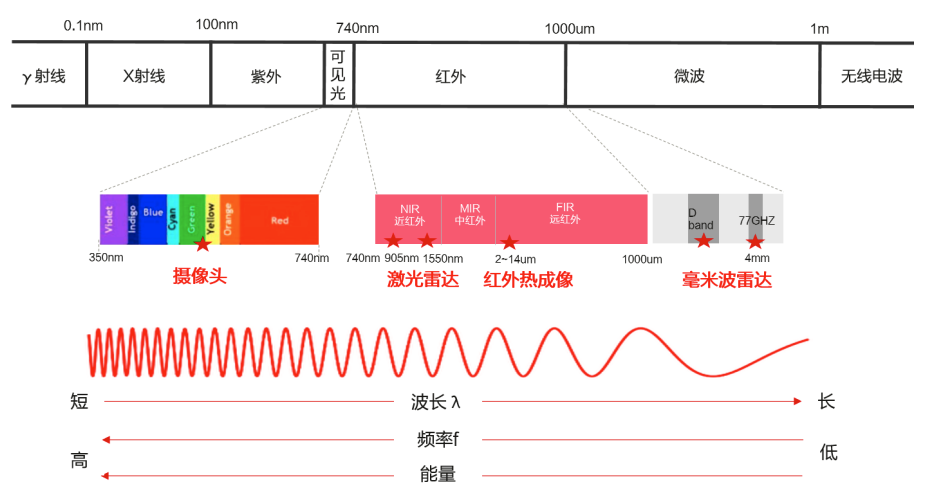
In addition to high pixel cameras, 4D millimeter-wave radar, and LIDAR, Huawei has also planned a perception path for infrared cameras in future perception hardware planning.
Currently, cameras have some flaws exposed, such as significant impact on their perception capabilities in extreme scenarios, such as extremely dark or rainy conditions. However, infrared cameras, which perform imaging by thermal radiation, can work as usual at night and have strong penetration abilities even in heavy rain or fog and sandstorms.However, the current cost of this solution is still relatively high, and the requirements for perception fusion algorithms will become even more stringent. Most importantly, this is an occasional extreme scenario. Therefore, it may be necessary to wait until the lidar and 4D millimeter wave radar are well integrated into the algorithm before implementing this.
In response to continuous optimization of future technology and cost, Huawei has also predicted the development path of the future sensor form, which is actually similar across the industry. However, we should note Huawei’s advantage in the breadth of the field, which will give Huawei an advantage in sensor integration.
- Antenna distributed deployment + centralized computing
For example, the front-end perception and back-end signal processing and perception processing of millimeter-wave radar are currently integrated. However, this can be directly divided for processing to transmit front-end perception to the back-end domain controller for processing, as with lidar.
- Vehicle body fusion deployment
This trend is very certain and many manufacturers have already made efforts, such as Byton’s K-Byte concept car that integrated a scalable lidar on both sides. In the future, we may see lidars integrated into headlights, and outside antennas can integrate GPS, 4G/5G, and FM signals.
- Patch-type sensor
This is the ultimate concept, because following the route of hardware miniaturization and integration, the shape of sensors will tend to be “flat” and pursue plug-and-play. Micro-lens arrays, intelligent skin/conformal antennas, silicon photonics, etc., may become the technological breakthroughs to achieve the above concept.
Conclusion
At this HDC, I saw that Huawei has released more development tools for developers to use, and developers can already benefit from HarmonyOS. The activation devices and number of users of HarmonyOS have also shown that the ecological construction of Hongmeng is beginning to take shape. This is a very good start for Hongmeng and Huawei.
Regarding the intelligent cockpit that I am concerned about, Huawei showed an unreleased car image, indicating that atomic components are beginning to emerge on the car side. At the same time, Huawei also demonstrated its research and imagination for future intelligent cars in various technologies.
As a Tier 1 company in the automotive industry, Huawei has received attention due to its powerful cross-domain technical capabilities. This makes Huawei infinitely close to car manufacturing even without producing cars.
This article is a translation by ChatGPT of a Chinese report from 42HOW. If you have any questions about it, please email bd@42how.com.
